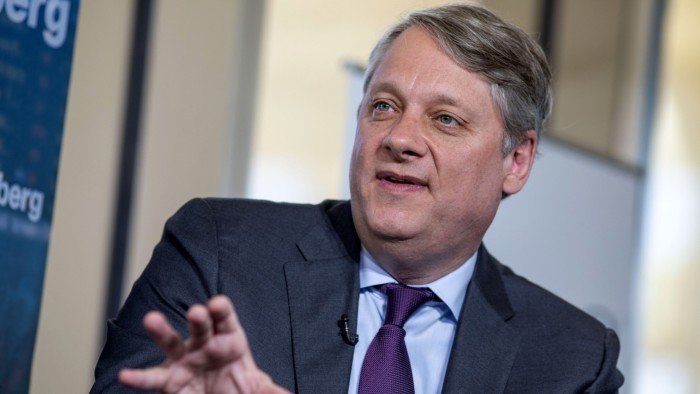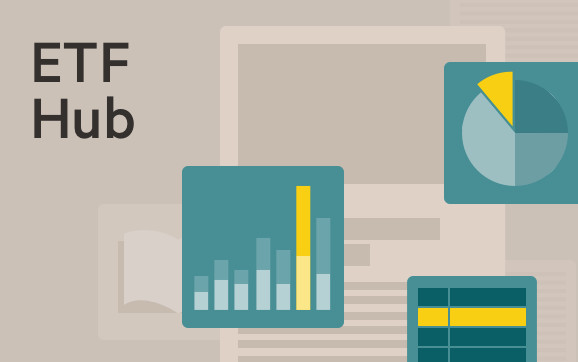‘Star’ fund managers jump into ETF space

Simply sign up to the Exchange traded funds myFT Digest -- delivered directly to your inbox.
Latest news on ETFs
Visit our ETF Hub to find out more and to explore our in-depth data and comparison tools
A battery of “star” fund managers have muscled their way into exchange traded funds for the first time as the in-vogue fund structure expands from its passive, index-tracking roots into actively managed strategies.
Investment houses’ rising appetite to unleash their “brightest and best” performers into the ETF world is also recognition that traditional mutual funds are rapidly losing market share, particularly in the US, and that ETFs appear to be the future.
“The pendulum has swung to active ETFs away from traditional active mutual funds and it doesn’t look like it’s coming back,” said Todd Rosenbluth, head of research at VettaFi, a consultancy. “Having your best managers available for those investors that are interested in ETFs is becoming more important.”
Pimco, Franklin Templeton, BlackRock and T Rowe Price are among the heavyweight houses to have launched ETFs helmed by their star managers in recent weeks.
Dan Ivascyn, group chief investment officer of Pimco, was named lead manager of its Multisector Bond Active ETF (PYLD), which launched last month. This was Ivascyn’s first foray into US-domiciled ETFs, although he is a named portfolio manager on some Canadian ones.
Earlier in June, Franklin Templeton said its new Franklin Income Focus ETF (INCM) would be managed by a team led by CIO Ed Perks that oversees almost $85bn of multi-asset income strategies, again their first venture into ETFs.
June also saw the debut of the T Rowe Price Capital Appreciation Equity ETF (TCAF) managed by David Giroux, who oversees the $50bn T Rowe Price Capital Appreciation mutual fund, another first.
In May, BlackRock unveiled a Flexible Income ETF (BINC) managed by Rick Rieder, CIO of global fixed income, and a Large Cap Value ETF (BLCV) steered by Tony DeSpirito, global CIO of fundamental equities. Again, these are the debut ETFs for the duo, who head up divisions managing $2.7tn and $220bn respectively.
The wave of launches comes after investors poured a net $609bn into US-listed ETFs last year, despite the market sell-off, while pulling a record $1.1tn from US-domiciled mutual funds, according to the Investment Company Institute.
As such, the launches are “confirmation of the trend from mutual funds to ETFs”, said Bryan Armour, director of passive strategies research, North America, at Morningstar.
While much of the money exiting mutual funds in 2022 was from active strategies, Armour said “it wasn’t just outright investors have turned away from actively managed strategies because actively managed ETFs were pulling in assets”.
While the ETF industry has traditionally been dominated by index funds, actively managed ones have accounted for 17 per cent of net US ETF inflows so far this year, almost three times their 6 per cent share of assets, according to VettaFi.
“Investors have been embracing actively managed ETFs in 2023 and as a result asset managers are bringing their best and brightest into the ETF market,” said Rosenbluth.
“In the early days of active ETFs, asset managers were reluctant to expose the IP [intellectual property] of their most widely held mutual funds into the ETF world.”
These concerns arose because ETFs have traditionally disclosed their full portfolio to the market every day. While this was fine for passive strategies, active managers feared this level of transparency would reveal their “secret sauce” to competitors.
Semi- and non-transparent ETF structures were developed to combat this, but have not really caught on.
Instead, Armour said, “we are seeing more comfort with daily disclosure” and the likes of JPMorgan and Dimensional Fund Advisors have built up large active ETF books.
He believed the trend was unequivocally good for customers, saying: “The more we can get star managers into more tax efficient and transparent ETF structure the better for ETF investors.”
The impact for both investors and the fund groups themselves may be less clear-cut, though.
For asset managers, the fear may be cannibalisation of their existing mutual fund ranges.
ETFs, even actively managed ones, tend to be cheaper than mutual funds, so any wholesale switch could dent fund houses’ revenue.
For instance, Franklin Templeton’s INCM costs 38 basis points, compared with 62bp for the nearest mutual fund alternative.
“It creates competition for their existing products,” said Armour.
Rosenbluth believed fee income was likely to be squeezed, but that the drop would be greater still if asset managers did not bring their best wares to ETFs.
“The reality is that advisers are increasingly choosing ETFs, so it’s better to keep the money in house, rather than [advisers] putting the money into someone else’s ETFs,” he said.
From investors’ point of view, one concern raised by Armour was that, unlike mutual funds, ETFs “can’t say ‘no’ to new money coming in, so you have to be careful about getting into capacity constraint issues”, particularly in actively managed funds.
A bigger concern may simply be that, over the long term, research has shown that most active funds underperform passive ones so investors may be disadvantaged by succumbing to these shiny new launches.
Latest news on ETFs

Visit the ETF Hub to find out more and to explore our in-depth data and comparison tools helping you to understand everything from performance to ESG ratings
Armour argued that “one of the biggest predictors of success is fees” so, given the lower costs in the ETF world, “you pool that with star managers and you can have a great chance of success”.
However, Rosenbluth cautioned that “even in the ETF structure, the challenges remain high for active managers to outperform” low-cost Index ETFs.
“Many investors have shifted to index-based ETFs and are likely not coming back even if well-known managers are running an active ETF,” he said. “But for those that still believe in active management, it is great to have more established managers running ETFs.”
“This is also a sign that managers are committed to the ETF market,” Rosenbluth added. “You don’t want it to fail if you have your best and brightest behind it.”

Comments